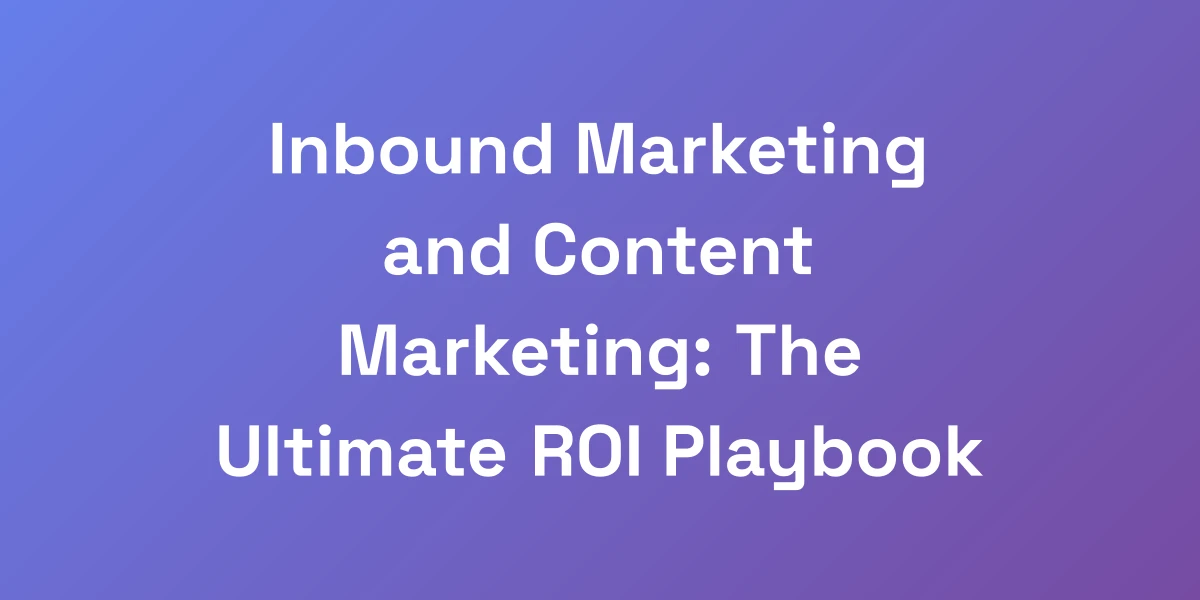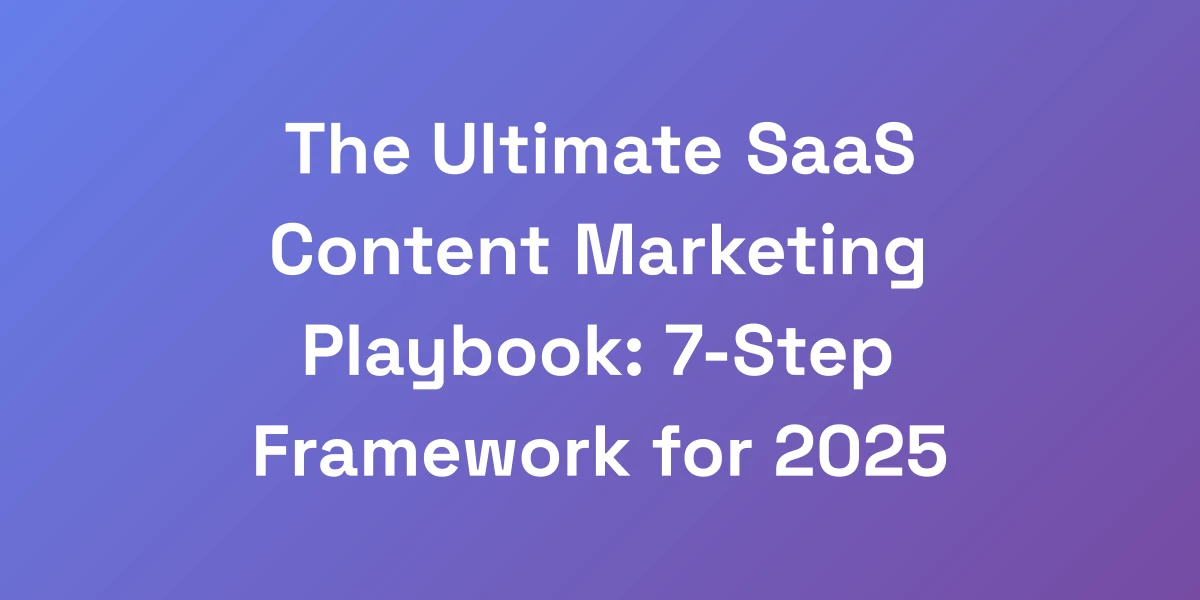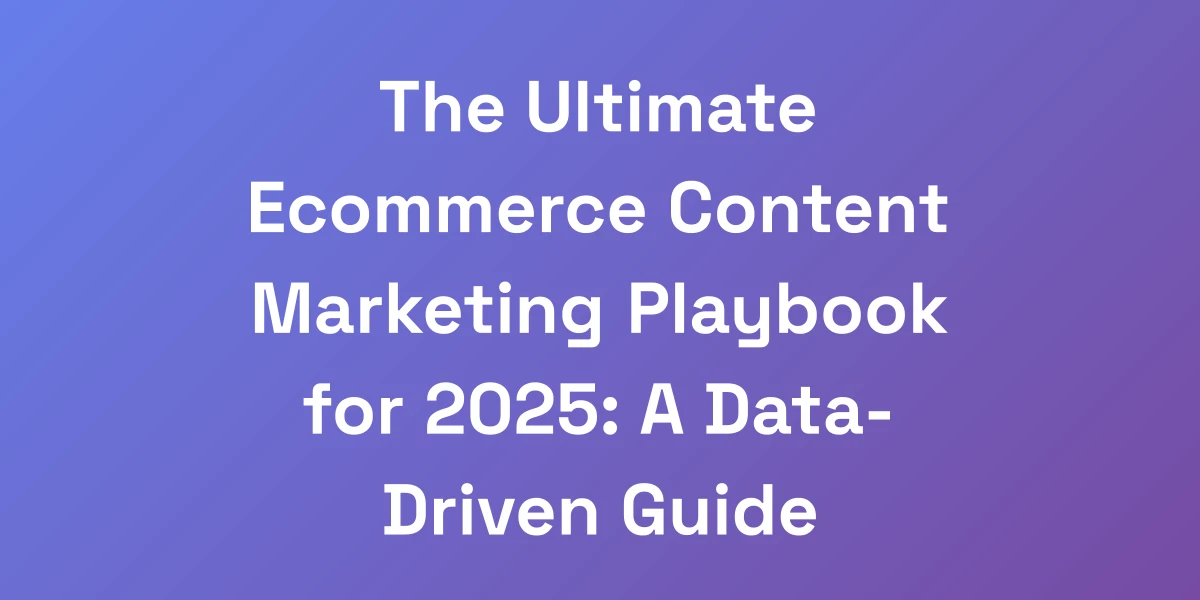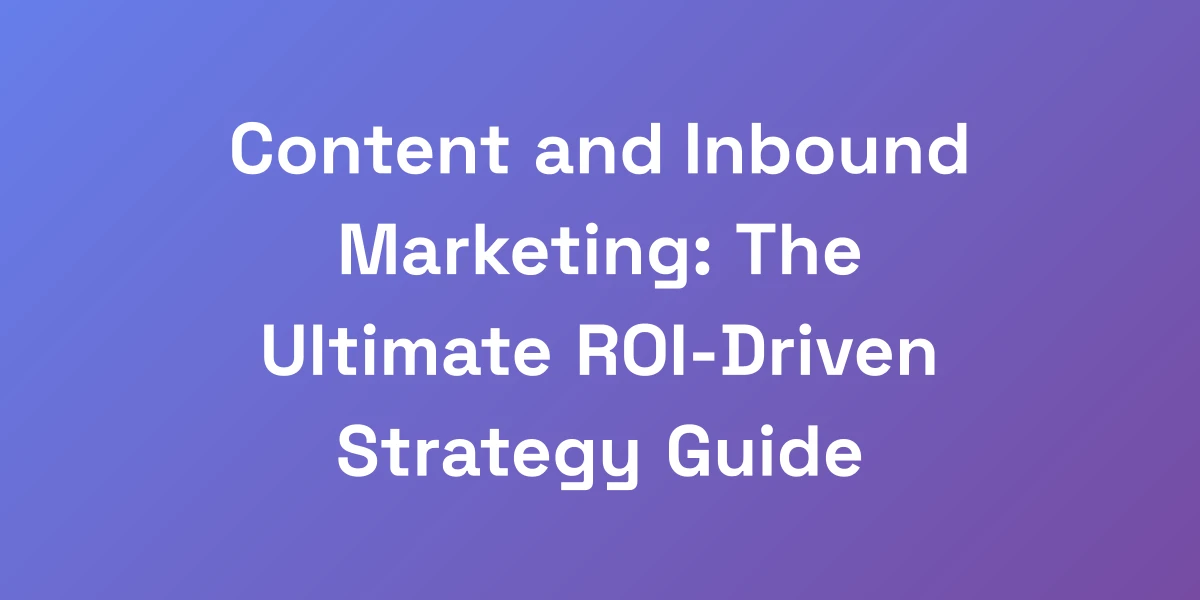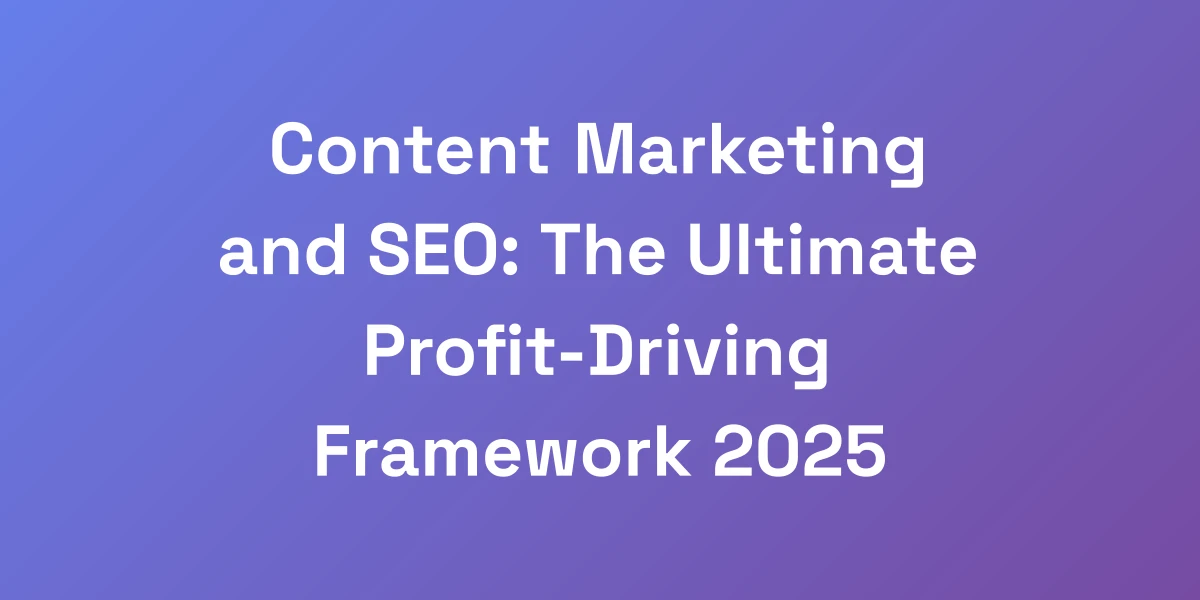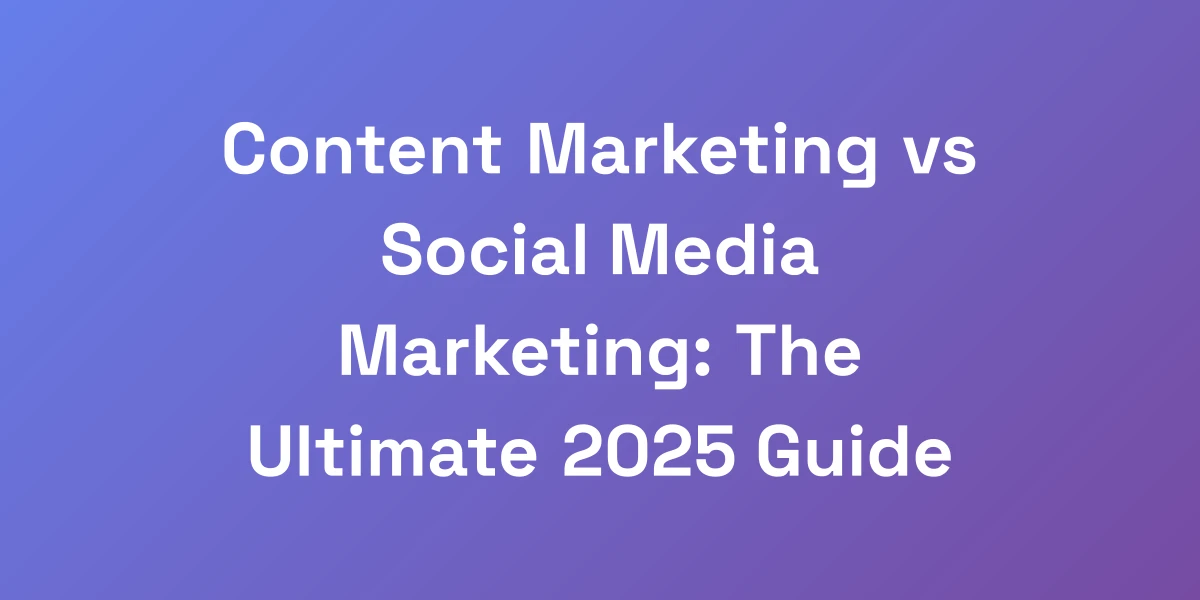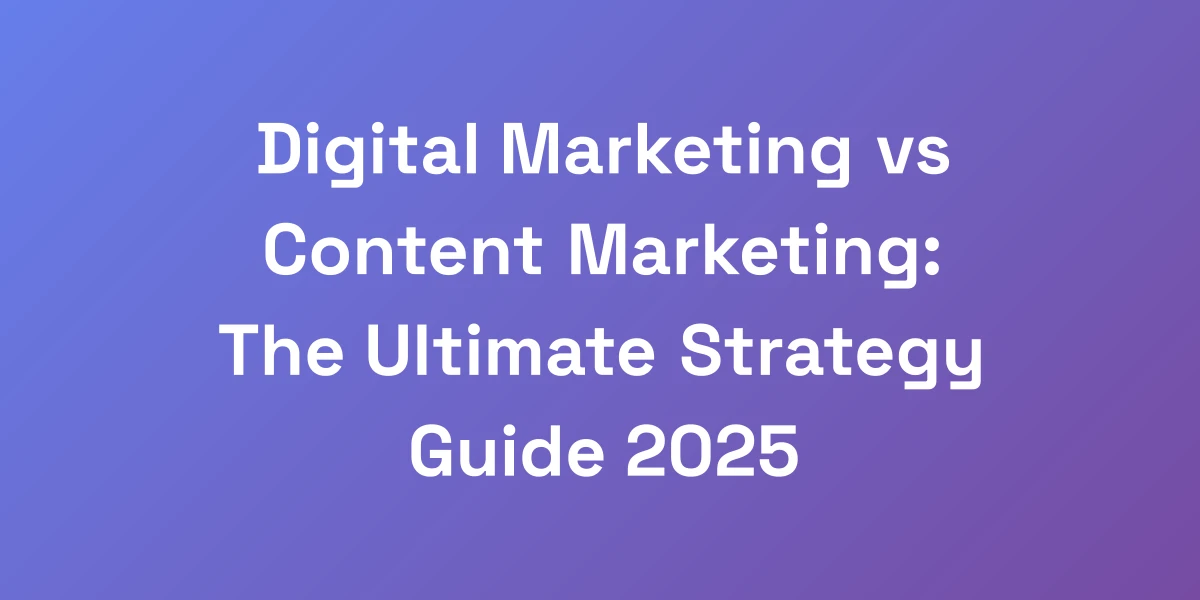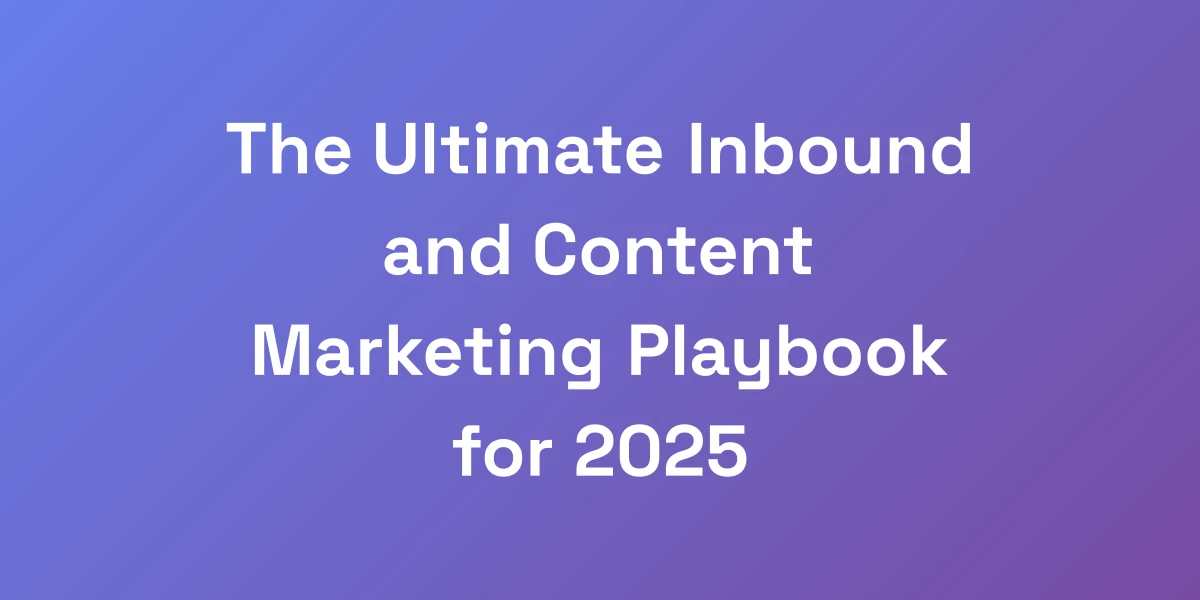
The Ultimate Inbound and Content Marketing Playbook for 2025
Apr 4, 2025 | By [email protected]
Why Traditional Marketing Is Dead (And What’s Replacing It)
Listen up, because this is going to blow your mind: Companies are wasting billions on traditional marketing that nobody wants to see.
Here’s the truth – the average person sees 4,000-10,000 ads per day, but only remembers about 4 of them. That’s why smart companies are ditching the old playbook and going all-in on inbound and content marketing.
It’s not just cheaper – it’s what modern customers actually want.
They’re tired of being sold to; they want to be educated and entertained. Let me show you how the giants are crushing it with this new approach.
The Shocking Stats Behind Traditional Marketing’s Decline
Traditional marketing isn’t just fading; it’s sinking. Did you know that inbound marketing costs 62% less per lead than traditional outbound marketing? And that’s not all – it generates 54% more leads. Content marketing statistics speak volumes about where the industry is heading.
Imagine pouring resources into methods that yield such low returns. The numbers speak volumes about where the industry is heading.
With consumers bombarded by thousands of ads daily, it’s no wonder they’re tuning out. The era of interruptive advertising is over.
So, what’s next? A shift towards strategies that respect and engage the audience, rather than just pushing products.
How Netflix Built a $250B Empire Through Content
Netflix’s journey is a masterclass in content marketing.
They didn’t just offer a streaming service; they created a content ecosystem that kept viewers hooked.
By crafting engaging narratives around their shows and leveraging social media to build communities, Netflix transformed from a DVD rental service to a $250 billion empire.
Consider “Stranger Things” – it wasn’t just a show; it was a cultural phenomenon, amplified by strategic social media engagement and interactive experiences.
This approach shows that when content resonates, it drives engagement, loyalty, and, ultimately, revenue.
Why Your Customers Are Ignoring Your Ads
Ever wonder why your meticulously crafted ads aren’t converting? It’s simple: your customers are ignoring them.
With the average person seeing up to 10,000 ads a day, standing out is harder than ever.
Traditional ads are viewed as interruptions, not valuable content, leading to low engagement rates.
To capture attention, you need to offer something more – something that educates, entertains, and provides real value.
Inbound and content marketing do exactly that, positioning your brand as a trusted authority rather than just another advertiser.
The Rise of Permission-Based Marketing
Permission-based marketing is the new frontier.
Instead of bombarding customers with unsolicited messages, this strategy focuses on earning their attention and trust.
It’s about building relationships and delivering content that your audience actually wants.
By obtaining permission, you’re ensuring that your marketing efforts are directed towards an engaged and interested audience, increasing the chances of conversion.
This approach not only respects your audience but also enhances the efficacy of your marketing campaigns.
Case Study: HubSpot’s $1.3B Revenue Through Inbound
HubSpot is a prime example of inbound marketing done right.
By focusing on creating valuable content and nurturing leads through their sales funnel, HubSpot has amassed over $1.3 billion in revenue.
They didn’t rely on traditional advertising; instead, they built a comprehensive inbound strategy that attracted, engaged, and delighted customers.
From blogging to affordable SEO services, HubSpot’s approach has consistently driven high-quality leads and sustained growth.
This case study underscores the power of inbound and content marketing in driving substantial business success.
The Perfect Marriage: How Inbound and Content Marketing Work Together
Here’s something most “experts” get wrong: they treat inbound and content marketing as separate strategies.
That’s like having a car without fuel.
Content is the fuel that powers your entire inbound engine.
When you nail this combo, magic happens.
Your content attracts the right people, your inbound systems nurture them, and your business grows on autopilot.
We’ve seen companies triple their leads in 60 days just by getting this relationship right. Let me break down exactly how this works.
The Content-Inbound Ecosystem Explained
Think of your marketing strategy as an ecosystem where content and inbound marketing coexist and thrive together.
Content acts as the magnet, drawing in your target audience with valuable and relevant information.
Inbound marketing then takes over, nurturing these leads through personalized interactions and automated workflows.
This synergy ensures that once someone engages with your content, they are seamlessly guided through the buyer’s journey.
The result? Higher engagement, better lead quality, and increased conversions.
7 Types of Content That Drive Inbound Success
- Blog Posts: Regularly updated blogs keep your audience informed and engaged.
- eBooks and Whitepapers: In-depth resources that provide value and establish authority.
- Infographics: Visually appealing content that simplifies complex information.
- Videos: Engaging multimedia that captures attention and drives emotional connections.
- Podcasts: Audio content that reaches audiences on the go.
- Case Studies: Real-life examples that demonstrate your expertise and success.
- Webinars: Interactive sessions that educate and engage your audience in real-time.
Each type serves a unique purpose, contributing to a well-rounded inbound strategy that attracts and retains customers.
Mapping Content to Your Customer Journey
Understanding where your audience is in their journey is crucial.
Tailor your content to meet their needs at each stage:
- Awareness: Create content that addresses their pain points and introduces your solutions.
- Consideration: Provide detailed information and comparisons to help them evaluate options.
- Decision: Offer testimonials, case studies, and clear calls to action to encourage conversion.
By aligning your content with the customer journey, you ensure that your audience receives the right information at the right time, enhancing their overall experience and increasing the likelihood of conversion.
Converting Content Consumers into Customers
It’s not enough to attract visitors; you need to convert them into customers.
Here are some actionable tips:
- Effective CTAs: Use clear and compelling calls to action that guide users towards the next step.
- Landing Pages: Design optimized landing pages that facilitate conversion.
- Lead Magnets: Offer valuable resources in exchange for contact information.
- Personalization: Tailor your content and interactions based on user behavior and preferences.
- Follow-Up: Implement automated email sequences to nurture leads and keep them engaged.
By implementing these strategies, you can effectively turn content consumers into loyal customers.
Automation Secrets for Content Distribution
Automation is the secret sauce that makes your content distribution efficient and scalable.
Here’s how to leverage it:
- Scheduling Tools: Use platforms like Hootsuite or Buffer to plan and schedule your social media posts.
- Email Automation: Set up automated email campaigns that deliver personalized content to your subscribers.
- Content Management Systems: Utilize CMS tools to streamline content creation, editing, and publishing.
- Analytics Integration: Automatically track and analyze your content performance to make data-driven decisions.
Additionally, leveraging automated SEO optimization can further streamline your marketing efforts and drive better results.
By automating these processes, you free up time to focus on creating high-quality content while ensuring consistent and timely distribution.
Building Your Content Machine: A Step-by-Step Framework
Want to know the difference between companies crushing it with content and those getting crickets? It’s all about having a system.
The best content machines aren’t built on creativity alone – they’re built on repeatable processes that scale.
We’re talking about frameworks that turn your team into a content factory, pumping out killer pieces that actually drive results.
After analyzing hundreds of successful content operations, we’ve distilled it down to five key components that you can implement starting today.
The Content Strategy Blueprint
A solid content strategy is the foundation of your content machine.
Here’s how to build yours:
- Define Your Goals: What do you want to achieve? Increased brand awareness, lead generation, or customer retention?
- Understand Your Audience: Develop detailed buyer personas to tailor your content to their needs and preferences.
- Content Audit: Assess your existing content to identify what’s working and what needs improvement.
- Content Themes: Establish core themes that align with your brand and resonate with your audience.
- SEO Integration: Optimize your content for search engines to enhance visibility and drive organic traffic.
With a clear blueprint, your content strategy will be focused, organized, and aligned with your business objectives.
Building Your Content Calendar
Consistency is key in content marketing.
A well-planned content calendar ensures that you maintain a steady flow of content without gaps.
Here’s how to create one:
- Plan Ahead: Schedule your content at least a month in advance to stay organized.
- Mix Content Types: Vary your content formats to keep your audience engaged.
- Align with Marketing Campaigns: Synchronize your content with other marketing initiatives for maximum impact.
- Set Deadlines: Establish clear deadlines to ensure timely content creation and publication.
- Review and Adjust: Regularly review your calendar and make adjustments based on performance and feedback.
By maintaining a strategic content calendar, you ensure that your content efforts are consistent, organized, and aligned with your goals.
Creating Content That Actually Converts
Creating content that converts requires a deep understanding of your audience and their journey.
Here are some actionable tips:
- Know Your Audience: Tailor your content to address their specific pain points and needs.
- Value-Driven Content: Provide actionable insights and solutions that your audience can implement.
- Compelling Headlines: Craft attention-grabbing headlines that entice users to click and read more.
- Visual Appeal: Incorporate images, videos, and infographics to make your content visually appealing.
- Strong CTAs: Encourage your readers to take the next step with clear and compelling calls to action.
By focusing on these elements, you can create content that not only attracts but also converts your audience into customers.
Distribution Channels That Actually Work
Even the best content can fall flat if it doesn’t reach the right audience.
Here are some effective distribution channels:
- Social Media: Platforms like LinkedIn, Twitter, and Instagram are great for sharing your content and engaging with your audience.
- Email Marketing: Deliver personalized content directly to your subscribers’ inboxes.
- SEO: Optimize your content for search engines to drive organic traffic.
- Guest Blogging: Publish your content on reputable third-party sites to expand your reach.
- Content Syndication: Partner with other platforms to distribute your content to a wider audience.
By leveraging these channels, you can ensure that your content reaches the right people at the right time.
Measuring Content ROI Like a Pro
Measuring the return on investment (ROI) of your content is crucial for understanding its effectiveness.
Here’s how to do it:
- Set Clear Goals: Define what success looks like for your content efforts.
- Track Relevant Metrics: Focus on KPIs like lead generation, conversion rates, and revenue growth.
- Use Analytics Tools: Utilize tools like Google Analytics and HubSpot to track and analyze your content performance.
- Calculate ROI: Use the formula ROI = (Return – Investment) / Investment x 100 to calculate the profitability of your content.
- Adjust Strategies: Based on your findings, tweak your content strategies to maximize ROI.
By systematically measuring your content marketing ROI, you can make informed decisions that enhance your marketing efforts and drive business growth.
Advanced Inbound Tactics That Nobody’s Talking About
Let’s get tactical.
While everyone else is copying the same old playbook, we’re going to show you the advanced strategies that are actually moving the needle in 2024.
These aren’t your typical “write good content” tips – these are the specific techniques including auto SEO software that companies like HubSpot, Salesforce, and Shopify are using to dominate their markets.
Warning: these aren’t for beginners, but if you’re ready to take your game to the next level, pay attention.
AI-Powered Content Personalization
AI is revolutionizing how we approach content personalization.
With AI-powered tools, we can analyze vast amounts of data to deliver highly personalized content experiences.
This means showing the right content to the right person at the right time, increasing engagement and conversion rates.
Imagine tailoring your marketing messages based on individual user behavior and preferences – that’s the power of AI in inbound marketing.
Investing in AI SEO tools can set you apart by providing a level of personalization that was previously unimaginable.
The New Rules of SEO for Inbound
SEO isn’t just about keywords anymore.
The new rules of SEO emphasize user experience, semantic search, and high-quality content.
It’s about understanding the intent behind search queries and providing comprehensive, valuable answers.
Integrating advanced entity optimization ensures your content is aligned with Google’s Knowledge Graph, enhancing your visibility in featured snippets.
Staying updated with these SEO trends is crucial for maintaining your inbound marketing edge. Leveraging AI tools for SEO can help you effectively navigate these new trends by automating complex tasks and providing deeper insights.
Advanced Lead Scoring Techniques
Traditional lead scoring is outdated. It’s time to embrace advanced techniques.
Predictive lead scoring uses machine learning to analyze behavioral data and predict which leads are most likely to convert.
This approach not only increases the accuracy of your lead scoring but also speeds up the sales process.
By focusing on high-potential leads, your sales team can prioritize their efforts, leading to higher conversion rates and more efficient workflows.
Advanced lead scoring is a game-changer for businesses looking to optimize their sales funnels.
Multi-Channel Content Syndication
Expanding your content reach requires a multi-channel approach.
Content syndication allows you to distribute your content across various platforms, reaching a broader audience.
By repurposing your content for different channels, you maximize its exposure and impact.
This strategy not only increases your content’s lifespan but also enhances your brand’s visibility across multiple touchpoints.
Implementing a robust syndication strategy can significantly amplify your inbound marketing efforts.
Marketing Automation 2.0
Marketing automation has evolved, and so should your strategies.
Modern marketing automation goes beyond simple email sequences to integrate multichannel campaigns, advanced analytics, and AI-driven insights.
With Marketing Automation 2.0, you can create more sophisticated, personalized campaigns that adapt to user behavior in real-time.
This level of automation ensures that your marketing efforts are both efficient and highly effective.
Embracing advanced marketing automation tools can elevate your inbound strategy to new heights.
Measuring Success: The Metrics That Actually Matter
Stop tracking vanity metrics that don’t mean anything.
We’re going to show you the exact numbers you should be watching to measure your inbound and content success.
After helping hundreds of companies scale their marketing, we’ve identified the key performance indicators that actually predict revenue growth.
Forget about pageviews – these are the metrics that move markets.
Let’s dive into what you should be measuring and why.
The Only 5 KPIs You Need to Track
- Lead Generation: The number of new leads generated through your content efforts.
- Conversion Rates: The percentage of leads that convert into customers.
- Customer Acquisition Cost (CAC): The cost associated with acquiring a new customer.
- Customer Lifetime Value (CLV): The total revenue expected from a customer over their lifetime.
- Return on Investment (ROI): The profitability of your content marketing ROI.
Focusing on these KPIs provides a clear picture of your content’s effectiveness and its impact on your business growth.
Setting Up Your Analytics Dashboard
An analytics dashboard is your command center for tracking performance.
Here’s how to set it up:
- Select the Right Tools: Use tools like Google Analytics, HubSpot, or Tableau to gather and visualize your data.
- Integrate Your Platforms: Ensure all your marketing platforms are connected to provide comprehensive data.
- Customize Your Dashboard: Tailor your dashboard to display the KPIs that matter most to your business.
- Automate Reporting: Set up automated reports to regularly monitor your metrics without manual effort.
- Regular Reviews: Schedule regular review sessions to analyze the data and make informed decisions.
A well-configured analytics dashboard helps you stay on top of your performance and quickly identify areas for improvement.
Attribution Modeling for Content
Attribution modeling helps you understand which content efforts are driving conversions.
Here’s how to implement it:
- Choose a Model: Select an attribution model that aligns with your business goals, whether it’s first-touch, last-touch, or multi-touch.
- Assign Value: Allocate appropriate value to each interaction point that contributes to a conversion.
- Analyze the Data: Use your attribution model to identify which content pieces are most effective in driving conversions.
- Optimize Accordingly: Focus your efforts on the most impactful content and refine underperforming areas.
Proper attribution ensures that you can accurately assess the effectiveness of your content and make data-driven decisions to enhance your strategy.
Calculating True ROI
Understanding the true ROI of your content marketing is essential for measuring success.
Follow this formula: ROI = (Return – Investment) / Investment x 100.
Here’s how to apply it:
- Calculate Return: Determine the revenue generated from your content efforts.
- Determine Investment: Account for all costs associated with your content creation and distribution.
- Apply the Formula: Plug the numbers into the formula to get your ROI percentage.
This straightforward calculation helps you assess the profitability of your content marketing and guide future investments.
Predictive Analytics for Content Success
Predictive analytics leverages data and machine learning to forecast future performance.
Implementing predictive analytics involves:
- Data Collection: Gather extensive data on your content performance and audience behavior.
- Model Building: Use machine learning algorithms to identify patterns and predict outcomes.
- Actionable Insights: Translate predictions into actionable strategies to optimize content performance.
By anticipating trends and audience needs, predictive analytics empowers you to stay ahead of the curve and consistently deliver content that resonates.
